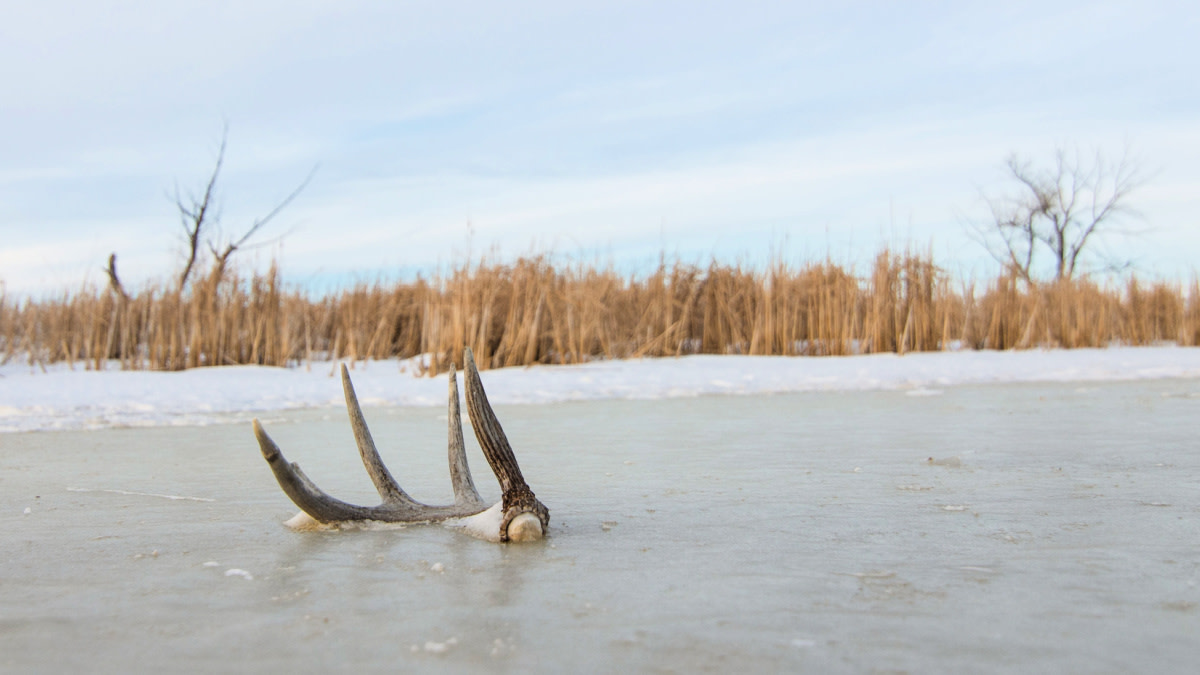
Food plots and ag fields are king when it comes to attracting deer in winter. The high carbs in corn and the protein in soybeans offer nutritional value that most food sources just can’t compete with. But not everyone has an uncle with 80 acres of winter wheat or a lease with an hour-glass shaped turnip plot. That’s OK, though: There’s plenty of white gold to be had on natural food sources that are available on every property across whitetail country.
Acorns Most hunters think of acorns as an October and November cuisine, but that shouldn’t be the case. It’s a common misconception that acorns turn sour after rain or snow and lose their value. The truth is that as long as they aren’t under a foot of snow, acorns will be a preferred food source for whitetails well into spring.
To find sheds around acorns, think back to those late October setups where you were hunting fresh acorn drops on ridgelines. These same spots that attracted cruising bucks four months ago will offer quality thermal cover from nasty winter weather, and hopefully some straggler acorns. This might be the one natural food source that trumps anything a farmer can grow, so don’t overlook acorn flats for sheds.
Woody Browse According to Michigan State University, woody browse makes up the largest percentage of a deer’s diet. The winter is often when woody browse consumption is highest, occasionally accounting for 80% of a whitetail’s intake.
What is woody browse exactly? Well, damn near everything that has bark, twigs, or leaves. Some favorites among wintering deer are new growth forests with sumac, yellow birch, white pine, white cedar, maple trees, elm, oak, hackberry, greenbrier, honeysuckle, grape vines, and more. Grazing on waist-high or head-high woody browse will be obvious when you see it, but the best places to find sheds in these areas are on well-traveled trails that lead to a destination food source, such as an ag field, food plot, or urban area.
Water Technically this isn’t a food source, but it’s still a vital part in every whitetail’s winter routine. Now more than ever, deer rely on water for thermoregulation and digestion because their firm diet of grains and browse hardly has any moisture. For this reason, they actively seek out open water sources, and so should you.
Look for whitetail sheds at creek crossings that double as drinking fountains. Just like jumping a fence tends to jostle off loose antlers, so will going in and over flowing water. Besides small streams, look for springs near beds or food that run year-round. These are great winter hangouts for whitetails, which also makes them a solid place to find fresh sheds.
Feature image via Captured Creative.







Conversation